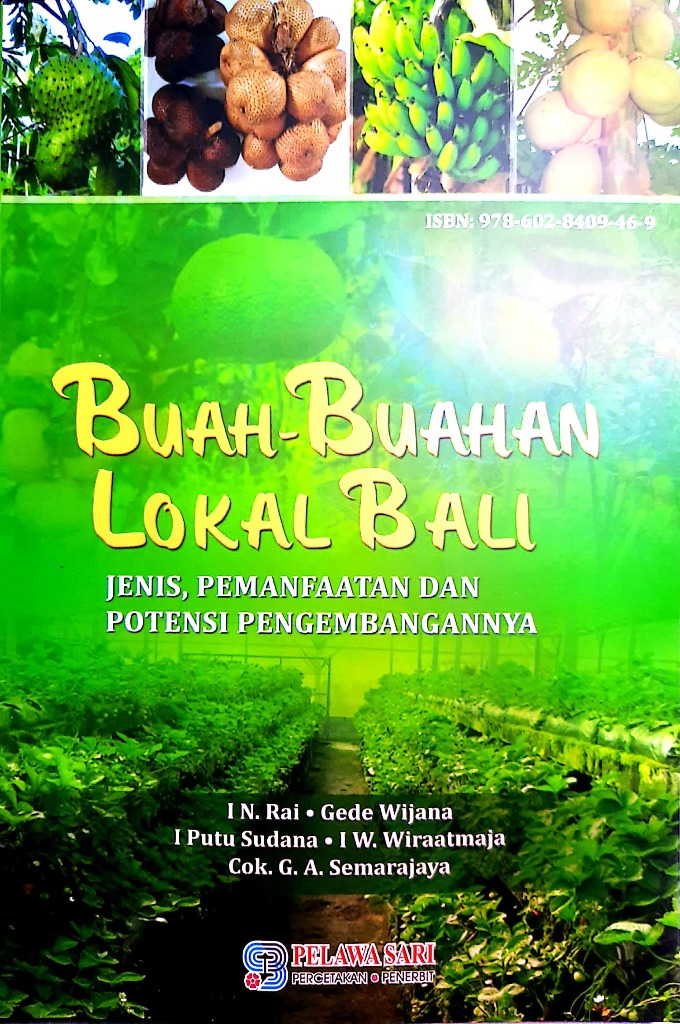
Bali Local Fruits; Types, Utilization and its Potency for Developing
I Nyoman Rai, Gede Wijana, I Putu Sudana, I Wayan Wiraatmaja, dan Cok. G.A. Semarajaya
ISBN : 978-602-8409-46-9 Published : 2016
Abstrak
Bali Province is rich in genetic resources of local fruits, not only of economic value for food , inter-island trade and exports, but also of social and cultural value for traditional and cultural ritual activities, tourism consumption and Spa materials (massage). Lack of attention in developing it causes local fruit to compete with imported fruit, its existence is increasingly pressed, even many of them are classified as rare. The large tourism market in Bali is also still very limited in utilizing local fruits. The urgency of the existence of local fruits pushed the Bali Provincial "DPRD" to issue Bali Provincial Regulation No. 3/2013 on Protection of Local Fruits, where one of the important things stated in the Regional Regulation was the need for the provincial government of Bali to strengthen, empower and protect genetic resources and products. local fruit through integration with tourism activities. This book examines the types and sub-types of local fruits that Bali has, their uses for various aspects of life, superior fruit commodities, harvest season calendars, potential for development, and protection, with the hope that they can be used as a source of information and facilitate the creation of producer- consumers between local fruit farmers and tourism markets (hotels, restaurants, etc.) resulting in an increase in the integration of agriculture and tourism. This book is very useful for elementary, junior high, high school students, students who take the Horticulture Study Program, Agronomy Study Program, Biology Study Program, and students who specialize in the field of fruits. For Postgraduate students, this book can be used as reference material for research discussions relating to their final project. This book will also be very helpful for fruit business people, traders, hobbyists, Department of Agriculture employees, and the general public who want to know and develop local fruits.
